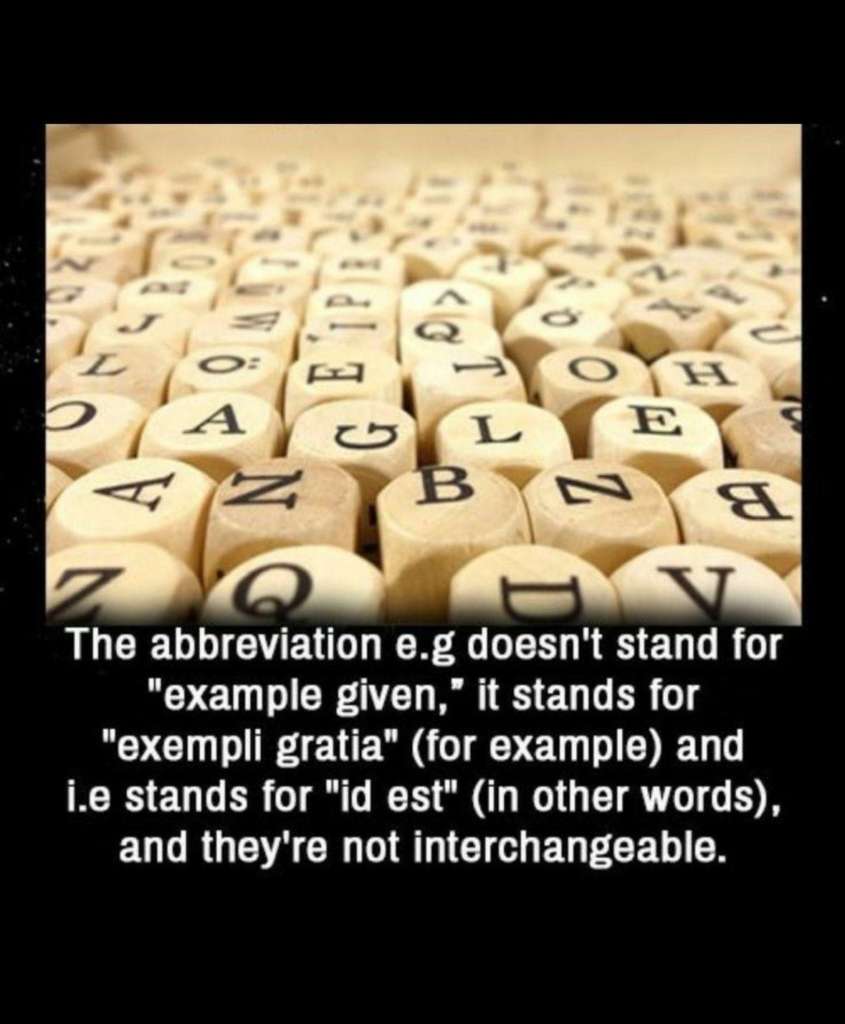In the world of writing and publishing, clarity and precision are paramount. This is especially true for the proper use of abbreviations, which can often be a source of confusion.
Two abbreviations that frequently cause mix-ups are e.g. and i.e.
These Latin abbreviations have distinct meanings and are not interchangeable, though they are often mistakenly used as such.
What Does e.g. Mean?
The abbreviation e.g. stands for exempli gratia, which translates to “for example.” It is used to introduce one or more examples that illustrate a preceding statement. When you see e.g., you can expect to find specific instances that help clarify the general point being made.
Example: “Many fruits are high in vitamin C (e.g., oranges, strawberries, and kiwis).”
In this sentence, e.g. introduces specific fruits that are high in vitamin C, offering a few examples to help the reader understand the general category.
What Does i.e. Mean?
The abbreviation i.e. stands for id est, which translates to “that is” or “in other words.” It is used to provide a clarification, restatement, or definition of the preceding statement. i.e. helps to explain or rephrase the idea more precisely.
Example: “He is a polyglot (i.e., someone who speaks multiple languages).”
In this sentence, i.e. introduces a clarification of the term “polyglot,” providing a clear definition to ensure the reader understands the meaning.
Why Are They Not Interchangeable?
The key difference between e.g. and i.e. lies in their purposes. e.g. is used to give examples, while i.e. is used to clarify or restate something in another way. Using them interchangeably can lead to misunderstandings, as the reader might be expecting examples when a clarification is intended, or vice versa.
Incorrect Usage: “We need to buy some supplies for the office (e.g., pens, paper, and ink cartridges, i.e., essential items).”
In this sentence, using both “e.g.” and “i.e.” creates confusion because it mixes examples with a clarification. The sentence would be clearer if one abbreviation were used appropriately.
Correct Usage with e.g.: “We need to buy some supplies for the office (e.g., pens, paper, and ink cartridges).”
Correct Usage with i.e.: “We need to buy some supplies for the office (i.e., essential items like pens, paper, and ink cartridges).”
Tips for Proper Usage
To ensure you are using these abbreviations correctly, keep these tips in mind:
- Identify the Purpose: Determine whether you are providing examples or clarifying a statement. Use e.g. for examples and i.e. for clarifications.
- Use Commas: Place a comma after e.g. and i.e. to set them off from the rest of the sentence. This helps to clearly distinguish the abbreviation from the following text.
- Check for Clarity: After writing your sentence, reread it to ensure that the use of e.g. or i.e. makes the intended meaning clear to the reader.
By understanding and correctly using “e.g.” and “i.e.,” you can enhance the clarity and precision of your writing. These small but powerful abbreviations can help you communicate your ideas more effectively, ensuring that your readers grasp your meaning with ease.

Typesetting Tips
In typesetting, i.e. and e.g. are typically not italicized. These abbreviations have become standard parts of the English language, and italicizing them is generally unnecessary. However, if you are writing in a context where you are discussing them as terms or in a formal academic setting, you might choose to italicize them for emphasis or clarity.
Here’s a quick guide to keep in mind:
- Standard Usage: Do not italicize.
- Example: Many fruits are high in vitamin C (e.g., oranges, strawberries, and kiwis).
- Example: He is a polyglot (i.e., someone who speaks multiple languages).
- Discussing the Terms Themselves: Italicize to highlight the term as a subject of discussion.
- Example: The abbreviation i.e. stands for “id est.”
- Example: The abbreviation e.g. stands for “exempli gratia.”
In most cases, especially for general writing and publications, it’s best to avoid italicizing “i.e.” and “e.g.” to maintain readability and flow.
